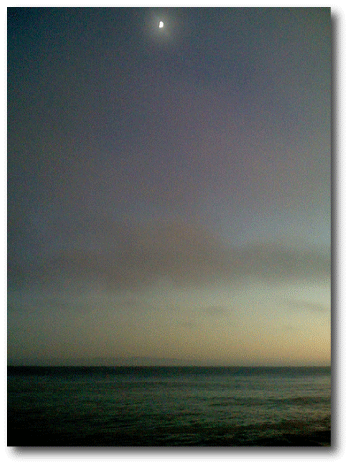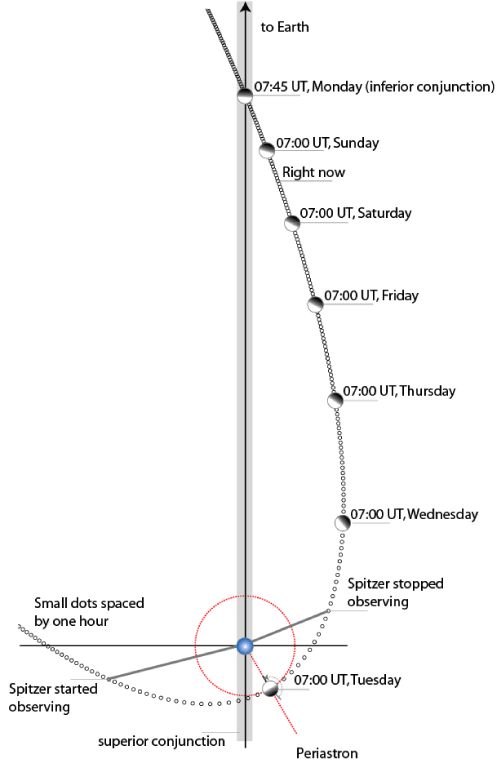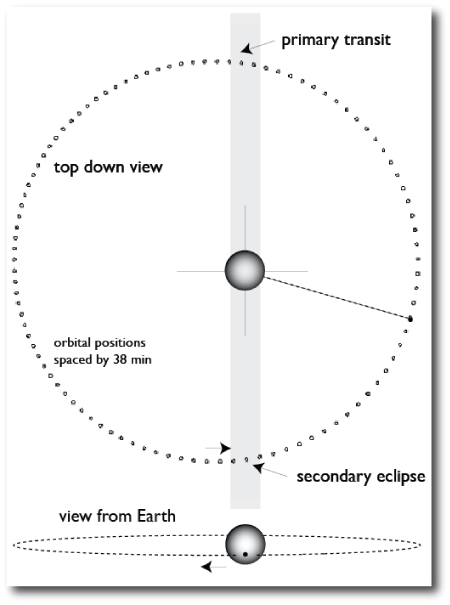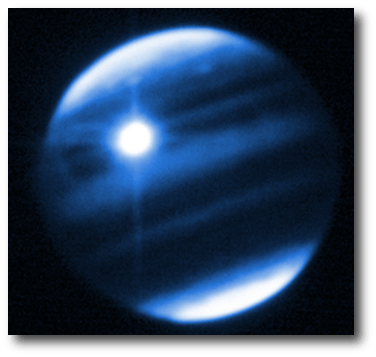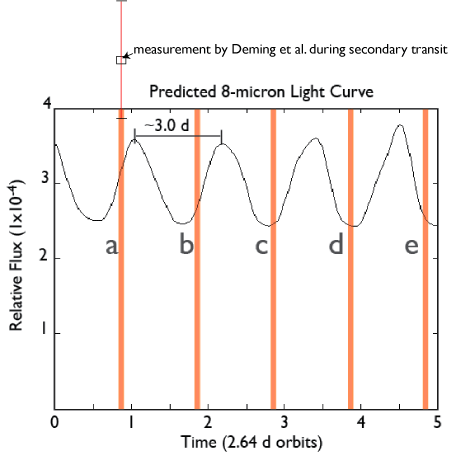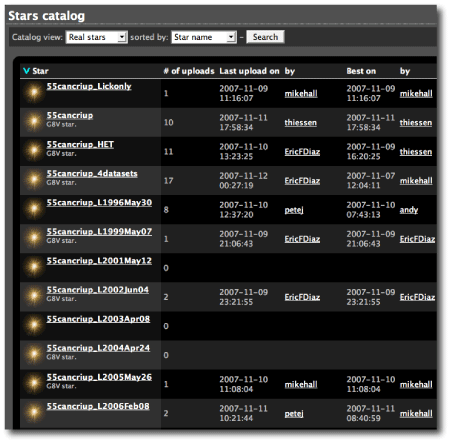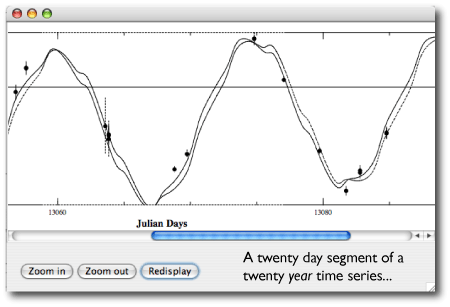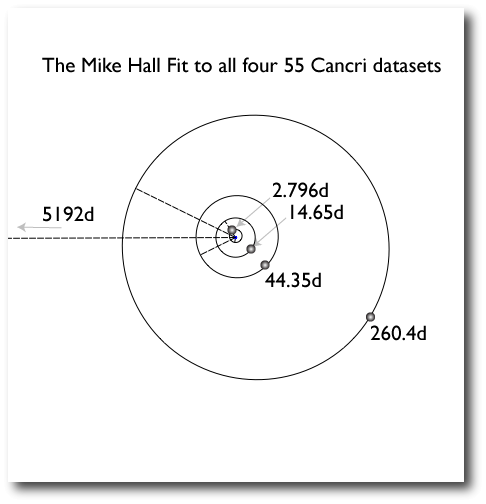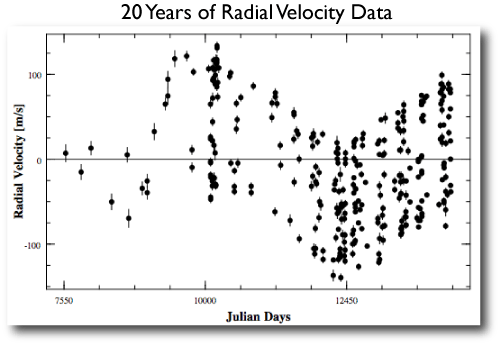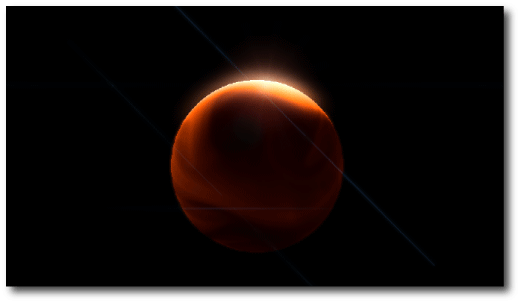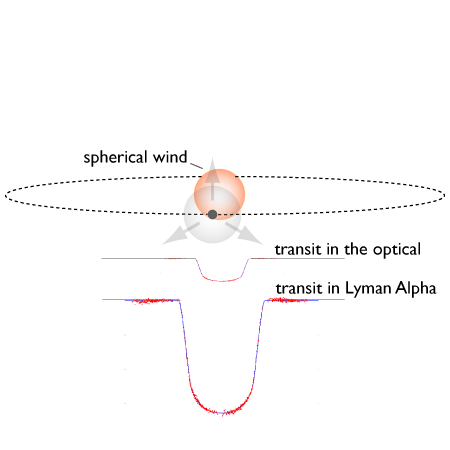
Image Source.
As the academic quarter draws to a close, it gets harder to keep up a regular posting schedule. This year, certainly, the difficulty has nothing to do with a lack of exciting developments associated with extrasolar planets.
A few unrelated items:
It appears that the HD 80606b Spitzer observations went smoothly, and that the data has been safely transmitted to Earth via NASA’s Deep Space Network. It is currently in the processing pipeline at the Spitzer Science Center. When it clears the pipeline, the analysis can start.
Back in September, I wrote a post about Bruce Gary’s Amateur Exoplanet Archive. This is a web-based repository for photometric transit observations by amateurs. With the number of known transits growing by the month, there’s a planet in transit nearly all of the time. Over 90 light curves have been submitted to the archive thus far. For transiting planets such as HD 189733b or HD 209458b, which have significant numbers of published radial velocity data, it’s very interesting to take the transit center measurements from Bruce’s archive and use them as additional orbital constraints within the console. The September post gives a tutorial on how to do this.
It really is turning out to be a banner year for extrasolar planets. As we head into December, this year is averaging more than one planet per week. The detection rate is more than double that of the previous four years.

The plot above gives a hint that Saturn-mass planets might wind up being fairly rare, as one might expect from the zeroth-order version of the core accretion theory. (For more information, this series: 1, 2, 3, 4, 5, 6, and 7 of oklo posts compares and contrasts the gravitational instability and core accretion theories for giant planet formation.)
Also, if you give talks, here’s a larger version of the above figure.
Another interesting diagram is obtained by plotting orbital period vs. year of discovery:
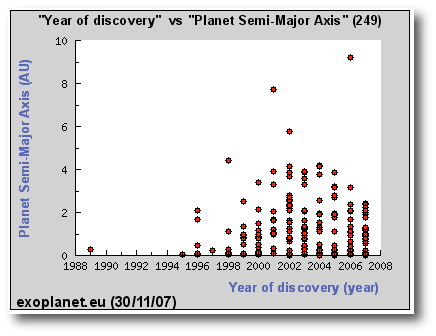
It’s possible that this diagram might be hinting that true Jupiter analogs are relatively rare. Could be that the disks around metal-rich stars are able to form Jovian mass planets and then migrate them in, while stars with subsolar metallicity form ice giants beyond the ice line. In this scenario, our solar system lies right on the boundary between the two outcomes.
It could also be the case that there are a whole slew of true-Jupiter analogs just on the verge of being announced. Time will tell.
And as always, it’s interesting to spend time with the correlation diagram tool over at exoplanet.eu.

